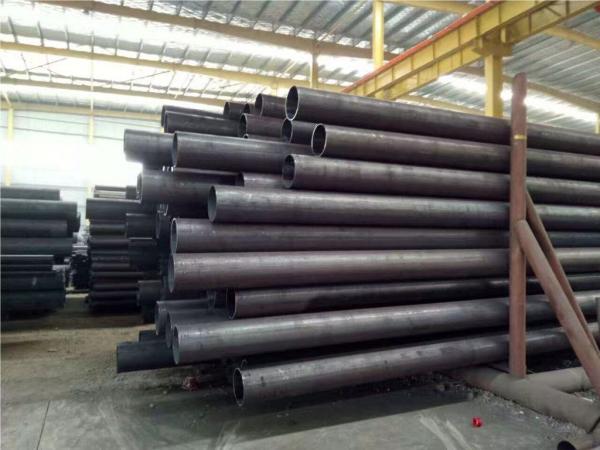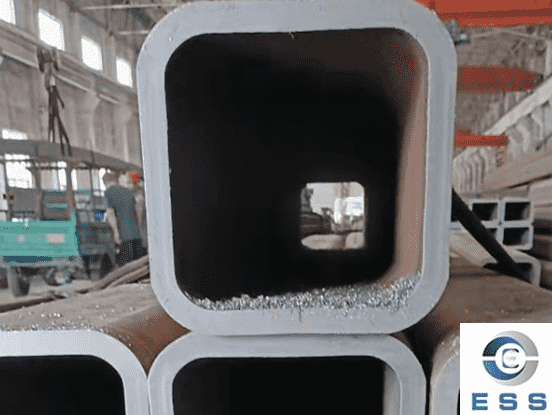How to Ensure Longevity of Seamless Steel Pipe?
Seamless steel pipes are widely used in various industries due to their exceptional durability, strength, and resistance to high temperatures and pressures. Whether in oil and gas, construction, or automotive sectors, the longevity of seamless steel pipes is crucial for ensuring the efficiency and safety of operations. To maximize the lifespan of seamless steel pipes and avoid costly replacements, it is essential to implement proper maintenance and care strategies. In this article, we will explore several key factors and best practices that can help ensure the longevity of seamless steel pipes.

1.Quality Assurance during Production:
The foundation for ensuring the longevity of seamless steel pipes lies in maintaining high-quality standards during their production. It is crucial to source pipes from reputable manufacturers that adhere to recognized industry standards. This includes verifying the material quality, chemical composition, and mechanical properties of the pipes. A thorough inspection of the manufacturing process, such as heat treatment and surface finishing, can identify potential defects or weaknesses that may compromise the pipe's longevity.
2.Proper Handling and Storage:
Before installation, it is essential to handle and store seamless steel pipes correctly. Pipes should be protected from physical damage, moisture, and exposure to corrosive substances. They should be stored in a dry and clean environment, preferably on racks or supports to prevent deformation. Additionally, pipes should be stored away from direct sunlight, extreme temperatures, and areas prone to vibration or impact.
3.Regular Inspection and Maintenance:
Regular inspection and maintenance are vital to identify any early signs of deterioration or damage in seamless steel pipes. Visual inspections should be conducted periodically to check for signs of corrosion, leaks, or structural weaknesses. Non-destructive testing methods, such as ultrasonic or magnetic particle testing, can be employed to detect internal defects. Any issues identified during inspections should be addressed promptly to prevent further damage.
4.Corrosion Protection:
Corrosion is a significant threat to the longevity of seamless steel pipes, particularly in environments with high humidity, chemical exposure, or saltwater conditions. Several protective measures can be taken to mitigate corrosion, including:
a) Coatings: Applying suitable coatings, such as epoxy, polyethylene, or fusion-bonded epoxy (FBE), can create a barrier between the pipe surface and the corrosive environment.
b) Cathodic Protection: Implementing cathodic protection systems, such as sacrificial anodes or impressed current, can prevent or minimize corrosion by shifting the electrochemical potential of the pipe.
c) Linings: In some cases, lining the interior of the pipe with materials like cement mortar, polyurethane, or polyethylene can provide an additional layer of protection against corrosion.
5.Proper Installation Techniques:
The installation of seamless steel pipes plays a crucial role in their longevity. Improper handling or installation can lead to stress concentration, misalignment, or damage to the pipe. Some key considerations for proper installation include:
a) Alignment and Support: Pipes should be properly aligned during installation to avoid excessive stress or strain. Adequate supports, such as hangers, clamps, or brackets, should be used to ensure proper weight distribution.
b) Welding Techniques: If welding is required during installation, it should be performed by qualified professionals using appropriate welding techniques and materials. Improper welding can weaken the pipe joints and compromise their integrity.
c) Avoidance of Mechanical Damage: Care should be taken to avoid mechanical damage during installation, such as impact or abrasion, as this can lead to premature failure.
6.Temperature and Pressure Management:
Seamless steel pipes are often subjected to extreme temperatures and pressures. It is crucial to operate within the recommended temperature and pressure limits specified by the manufacturer. Exceeding these limits can lead to material fatigue, deformation, or even catastrophic failure. Proper insulation and heat management should be employed to prevent thermal stress and minimize the impact of temperature fluctuations.
7.Regular Cleaning:
Regular cleaning of seamless steel pipes is necessary to remove accumulated debris, sediment, or corrosive substances that can accelerate deterioration. Different cleaning techniques, such as high-pressure water jetting or chemical cleaning, can be used depending on the nature of the contaminants. Cleaning should be performed carefully to avoid causing damage to the pipe surface.
Conclusion:
Ensuring the longevity of seamless steel pipes requires a combination of proactive measures, from quality assurance during production to proper installation techniques and regular maintenance. By adhering to industry standards, employing corrosion protection methods, and implementing suitable handling and maintenance practices, seamless steel pipes can deliver optimal performance over their intended lifespan. It is important to recognize that the specific requirements for ensuring longevity may vary depending on the application and operating conditions. Regular inspection, monitoring, and adaptation of maintenance practices are necessary to address any evolving challenges and ensure the continued longevity of seamless steel pipes.













 Eastern Steel Manufacturing Co.,Ltd not only improve product production and sales services, but also provide additional value-added services. As long as you need, we can complete your specific needs together.
Eastern Steel Manufacturing Co.,Ltd not only improve product production and sales services, but also provide additional value-added services. As long as you need, we can complete your specific needs together.










